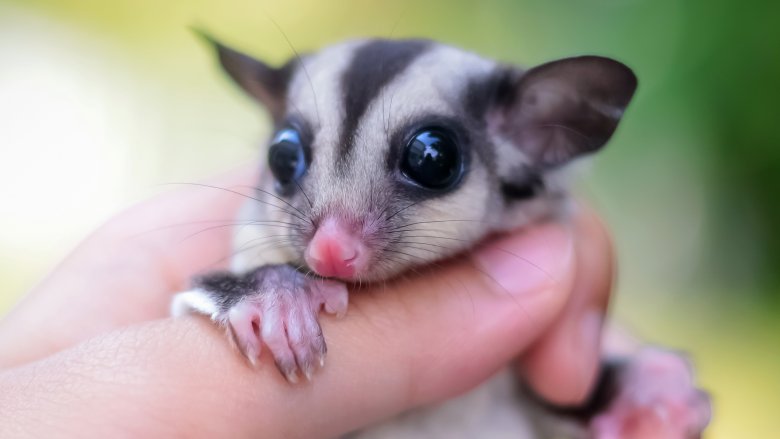Why Sugar Gliders Shouldn't Be Pets
At first blush, the humble sugar glider looks like the perfect pet. It's adorable, pocket-sized, and has the eye-to-face ratio of a Nickelodeon child star. But as thousands of ill-prepared Pokemon trainers undoubtedly learned before dying in flames, a creature's cuteness is no kind of gauge for how well it'll adapt to life as a pet.
Starting out with the bare bones facts: sugar gliders are indigenous to Australia, aka "nature's Thunderdome." The lovable sentient wingsuits are nocturnal by nature, and make their homes in trees, meaning that as a potential caregiver for one of the beasties, you've already got two strikes against you if you're planning to be awake during the day and not grow a small forest in your condo. The "they live in trees" detail will also become astonishingly clear when your tender human flesh comes into contact with claws formed over millions of years of evolution with the purpose of getting really, really good at digging into tree bark, which nine out of ten scientists agree is way more difficult to pierce than your arm flab.
If your own physical well-being isn't enough inspiration to forego purchasing the animal kingdom's own furry paper airplane, you should also consider the industry you'd most likely be supporting with your patronage. Like with a lot of exotic animals, there really isn't a morally backable way to buy a sugar glider. Many of the ones sold in pet stores and mall kiosks in the States come from less-than-reputable mills and breeders, according to PETA. The details get very David Cronenberg very quickly, but suffice it to say that caring about these animals they way you're supposed to care about a pet doesn't jive with backing companies that ship them in plastic bottles.
